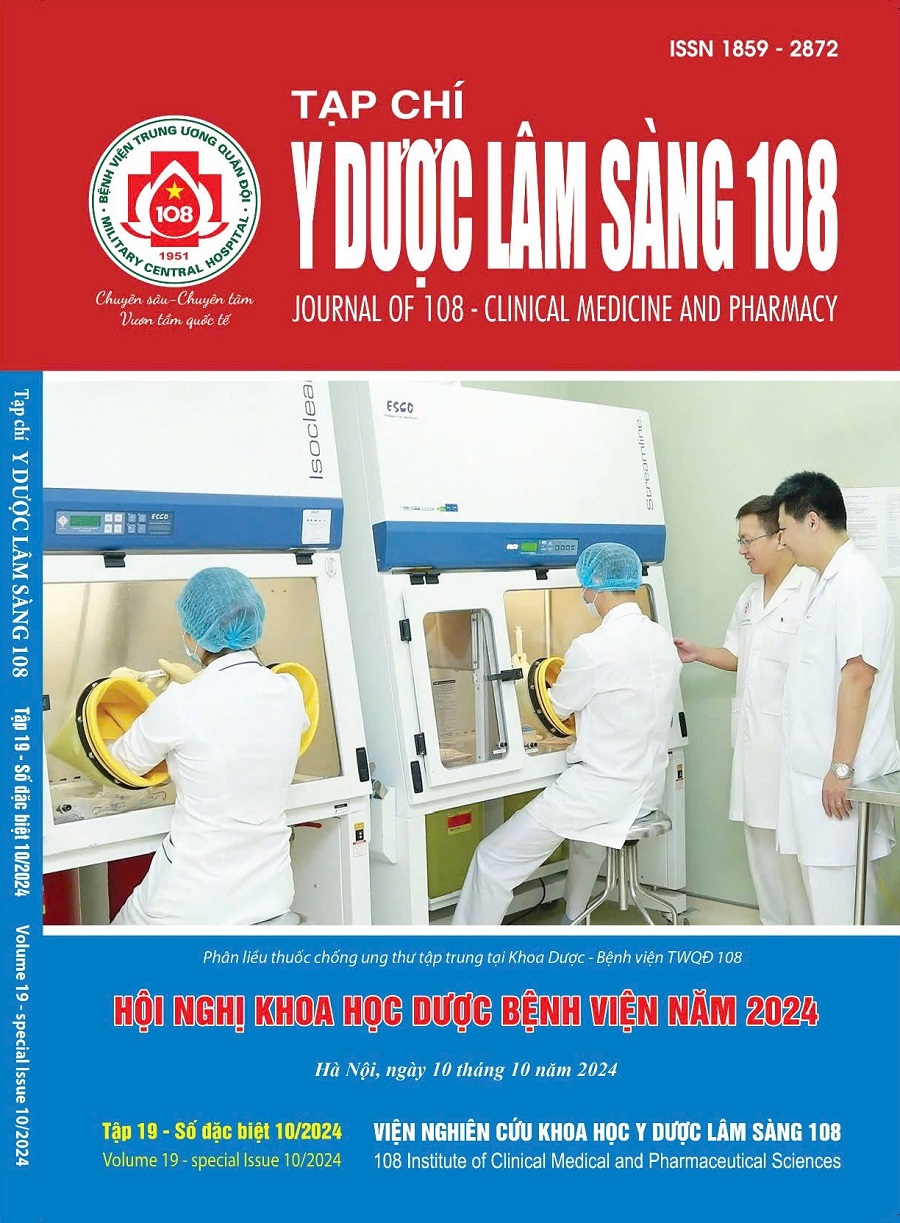Survey on the use of amikacin antibiotics at Saint Paul General Hospital (8-9/2023)
Main Article Content
Keywords
Abstract
Objective: To survey the current status of amikacin use in inpatients at Saint Paul General Hospital. Subject and method: A cross-sectional study was conducted on the medical records of patients aged 18 years and older who used amikacin for at least 1 day from August 1, 2023 to September 30, 2023 at Saint Paul General Hospital. Result: Of the total 294 medical records that met the research criteria, 30.3% of patients were prescribed amikacin in the intensive care units. The proportion of patients prescribed microbiological testing was 17.0%. E. coli was the most common pathogen among the bacterial isolates (41.4%). The majority of patients were prescribed amikacin in the empirical regimen with a rate of 90.5%, and 100% of patients were given amikacin in the combination regimen, mainly beta-lactam combination (87.9%). The median dose of amikacin was 16.7mg/kg/day. Of the 113 patients whose creatinine was monitored during or after amikacin use, 10 patients (8.8%) had acute kidney injury. Conclusion: This study provided information on the current status of amikacin use at Saint Paul General Hospital, thereby providing a basis for developing strategies to manage aminoglycoside antibiotics to ensure effectiveness and safety in patients.
Article Details
References
2. Pérez-Blanco JS, Sáez Fernández EM, Calvo MV, Lanao JM, Martín-Suárez A (2021) Evaluation of Current Amikacin Dosing Recommendations and Development of an Interactive Nomogram: The Role of Albumin. Pharmaceutics 13(2):264. doi: 10.3390/pharmaceutics13020264.
3. Salehifar E, Eslami G, Ahangar N, Rafati MR, Eslami S (2015) How aminoglycosides are used in critically ill patients in a teaching hospital in North of Iran. Caspian J Intern Med 6(4): 238-342.
4. Namazi S, Sagheb MM, Hashempour MM, Sadatsharifi A (2016) Usage Pattern and Serum Level Measurement of Amikacin in the Internal Medicine Ward of the Largest Referral Hospital in the South of Iran: A Pharmacoepidemiological Study. Iran J Med Sci 41(3): 191-199.
5. Nguyễn Thanh Tâm, Đặng Trần Quang Phụng, Phạm Hồng Thắm (2023) Khảo sát tình hình sử dụng kháng sinh amikacin tại Bệnh viện Nhân dân Gia Định. Tạp chí Y học Việt Nam 526(1B).
6. Bellomo R, Ronco C, Kellum JA, Mehta RL, Palevsky P; Acute Dialysis Quality Initiative workgroup (2004) Acute renal failure - definition, outcome measures, animal models, fluid therapy and information technology needs: the Second International Consensus Conference of the Acute Dialysis Quality Initiative (ADQI) Group. Crit Care 8(4): 204-212.
7. Dược thư quốc gia Việt Nam (2022) Chuyên luận Amikacin. 2022: Bộ Y tế.
8. Serio AW, Keepers T, Andrews L, Krause KM (2018) Aminoglycoside Revival: Review of a Historically Important Class of Antimicrobials Undergoing Rejuvenation. EcoSal Plus 8(1).
9. Nguyễn Thị Hải Yến, Lê Thị Mỹ và cộng sự (2023) Khảo sát việc sử dụng kháng sinh amikacin tại các Khoa Hồi sức tích cực, Bệnh viện Trung ương Quân đội 108. Tạp chí Y Dược Lâm sàng 108, 2023. Tập 18 - Số đặc biệt 10/2023.
10. Phạm Thị Thúy Vân (2013) Đánh giá tính hiệu quả và an toàn của amikacin với chế độ liều hiện dùng trong điều trị một số loại nhiễm khuẩn. Luận án Tiến sỹ, Trường Đại học Dược Hà Nội.
 ISSN: 1859 - 2872
ISSN: 1859 - 2872
